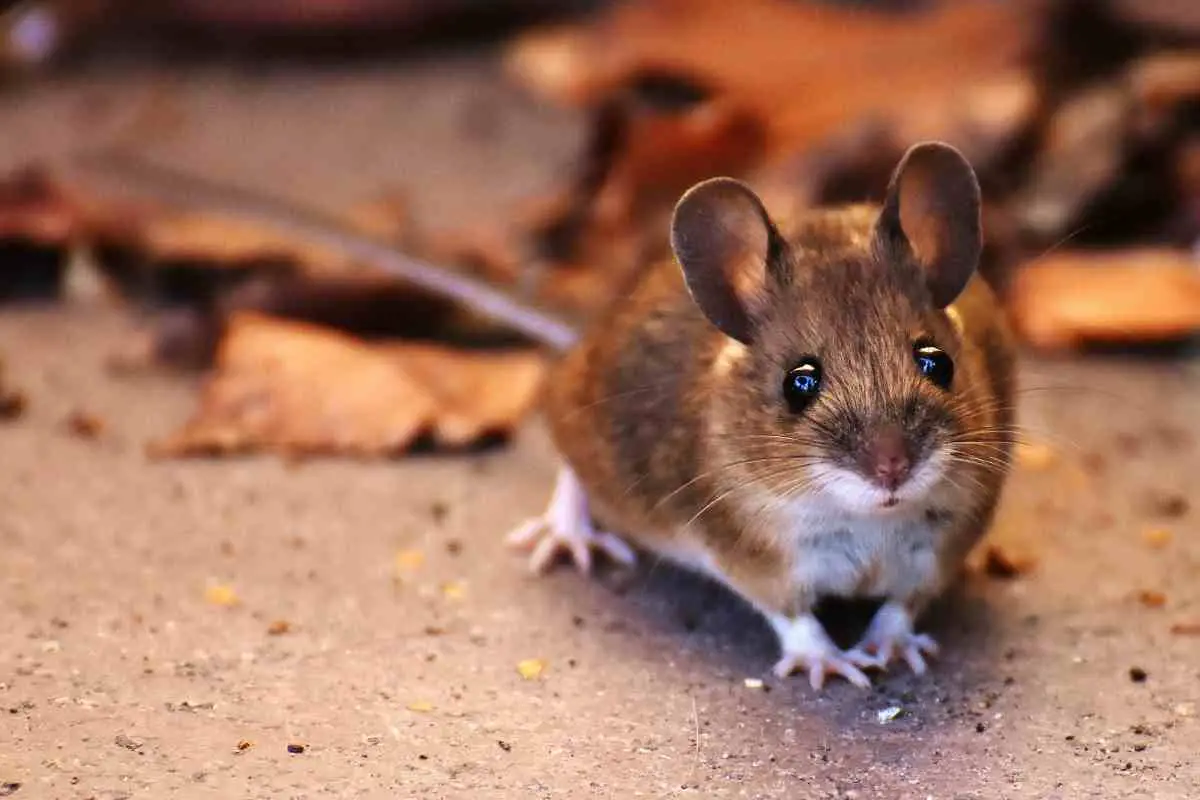Rats are unpleasant and destructive, which is why you wouldn’t like having them in your backyard.
These rodents are also a sign of poor hygiene.
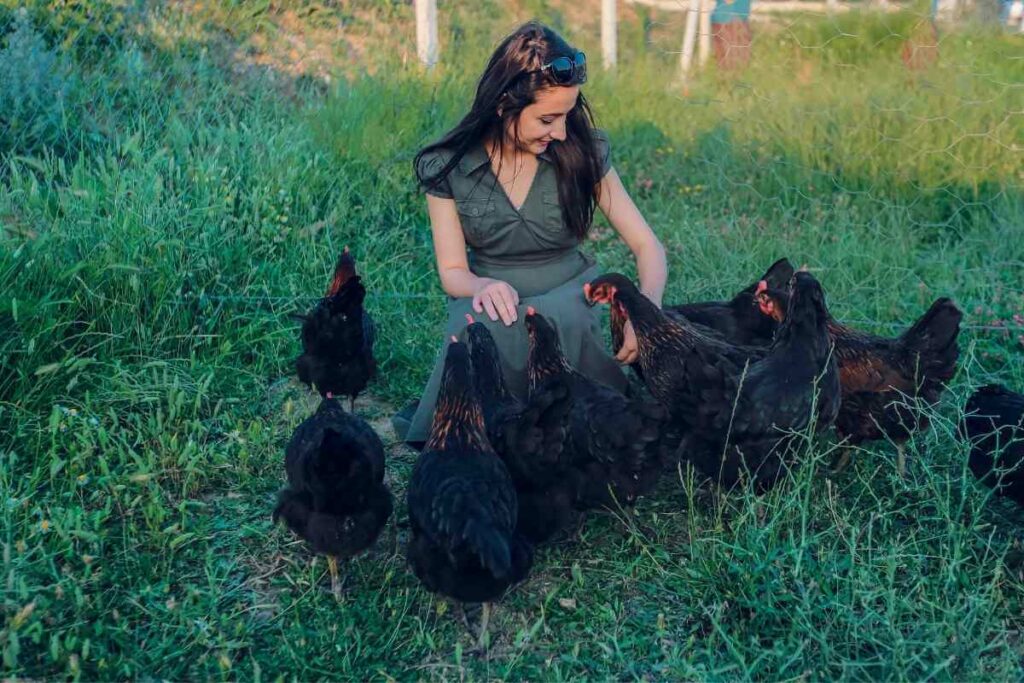
If your neighbor has chicken, you’re at an increased risk of suffering a rat infestation.
Additionally – Rats could attack your home to seek shelter and food. This explains why it’s easier to spot rats indoors when days become shorter and colder.
Why Are Rats a Problem?
Some people are okay with rats moving around their backyard.
This is understandable, as every person has their preferences.
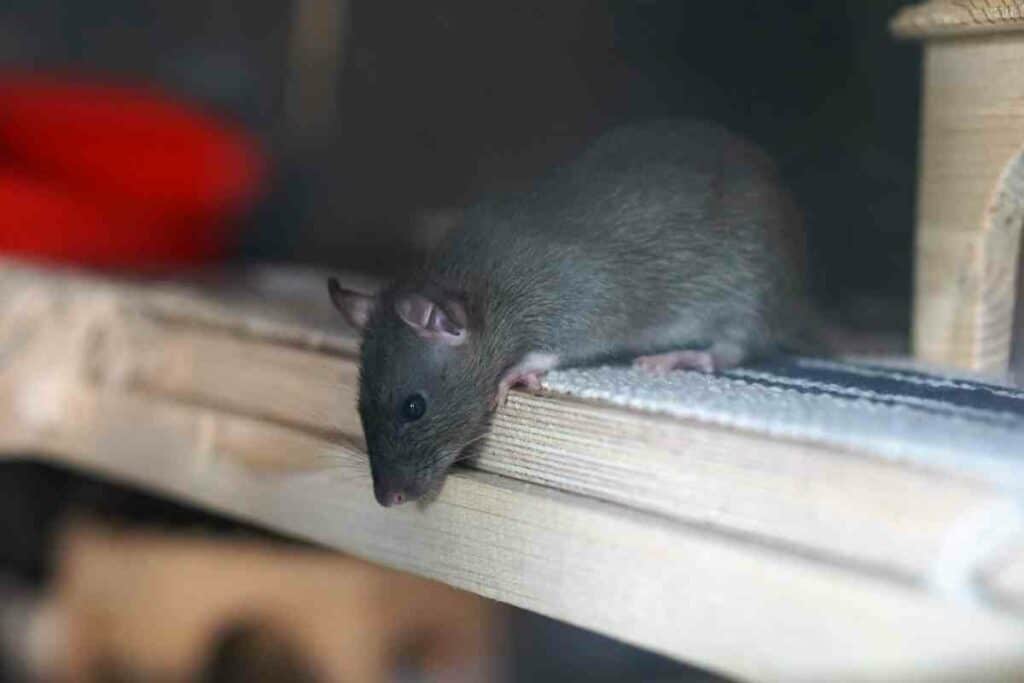
However, it’s unwise to have these animals lurking inside your home:
- First, rats can make you and your animals sick. Like other rodents, rats defecate on food after consuming it. If your chicken eats their feces, they are at a higher risk of getting a bacterial infection.
- Secondly, rats eat eggs and kill young birds. Although they primarily feed on eggs, these rodents will eat chicks when food is scarce. Rats kill by severing the head and sucking blood.
- Rats can also cause disputes between you and your neighbors. Nobody wants these rodents around their homes because of the harm and destruction they cause.
What Are the Signs of Rat Infestation?
Unless you inspect your backyard, it isn’t easy to detect rats.
These rodents are shy and mainly like moving around at night. This is when they feel safe exploring their habitat.
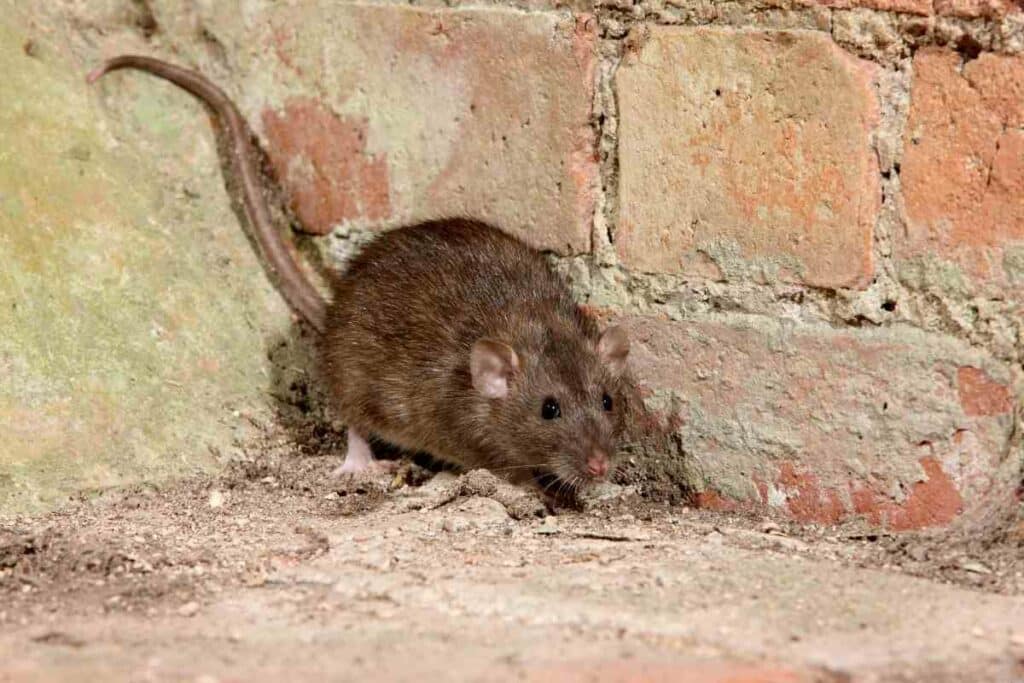
Regardless, you can tell if your home has rats by looking for the following signs.
Chewing Damage
The most common sign of rat infestation is chewing damage.
Rats mainly attack plastic and wood and chew them to the ground. If not, you’re likely to see signs of gnawing on doors and windows.
Burrows
Rats excel at burrowing. They can dig holes in your chicken’s coop and use them as access points.
These holes can be as big as three inches wide, allowing adult rats to pass through easily.
When you notice such holes, start devising ways of eliminating the rats.
Missing chicken feed
On average, a chicken eats 0.25 lbs. of food daily.
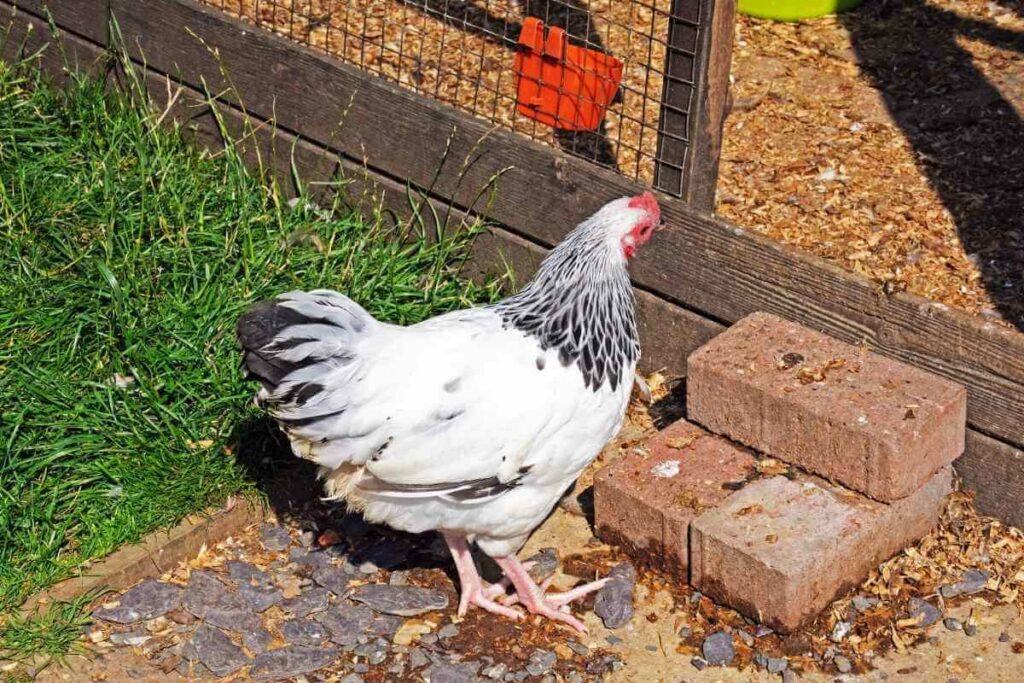
However, depending on the prevailing season and body size, your birds might consume more or less.
For Example – Your chicken will eat more during winter than in summer. It’s essential to keep track of your chickens’ consumption patterns. If you notice an unexpected increase, it could signify rat infestation.
Look for other indicators and develop ways to get rid of the rodents before they cause more damage.
Missing Eggs
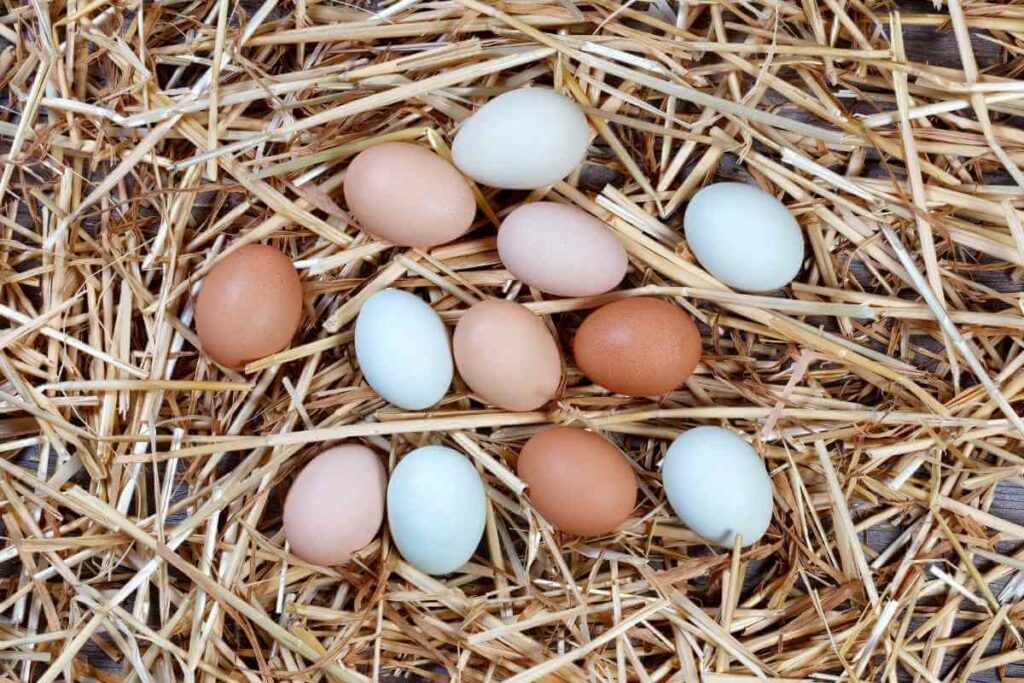
Rats like eating fresh eggs.
If you notice a reduction in the number of eggs in your coop, you might be dealing with a rat infestation.
How Do You Deal With Rats?
If you suspect that chickens are attracting rats to your backyard, transfer their feed to metallic containers.
Keep the bins locked to prevent the pests from consuming the feed.
Another way of preventing rat attacks is replacing the traditional chicken wire with a more robust and thicker hardware cloth.
The cloth secures the chicken run against rats, especially if held in place by strips and zip ties.
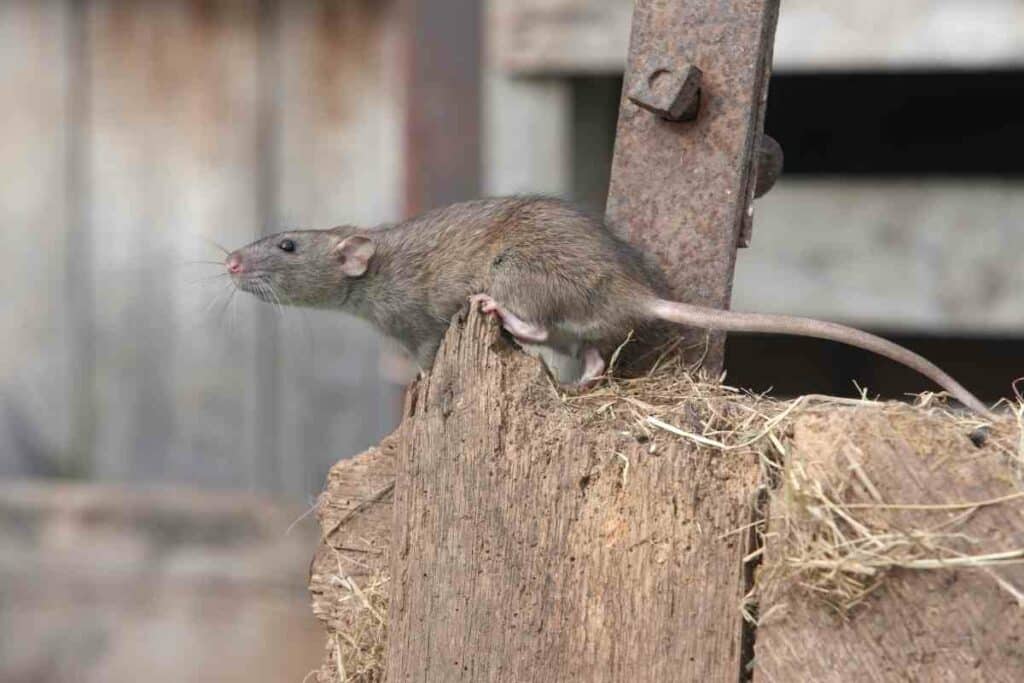
If rats have already attacked your chicken, remove the feeders and waterers every night and replace them in the morning until you get rid of all rats.
Depriving the pests of food and water forces them to seek alternative shelter for survival.
Use hardware cloth to repair any part damaged by gnawing. You can also use a sheet of metal if the damage is extensive.
Additionally – You can use traps to catch and eliminate rats. Although it’s a short-term solution, trapping effectively keeps these rodents away from your compound.
Avoid using poison for eliminating rats. As mentioned earlier, chickens feed on rats, meaning that poisoning could hurt them.
When birds eat poisoned rats, they can succumb to its harmful effects.
Instead, use traps and place them where they can’t hurt your chickens.
What are the Best Rodent-Proof Chicken Feeders?
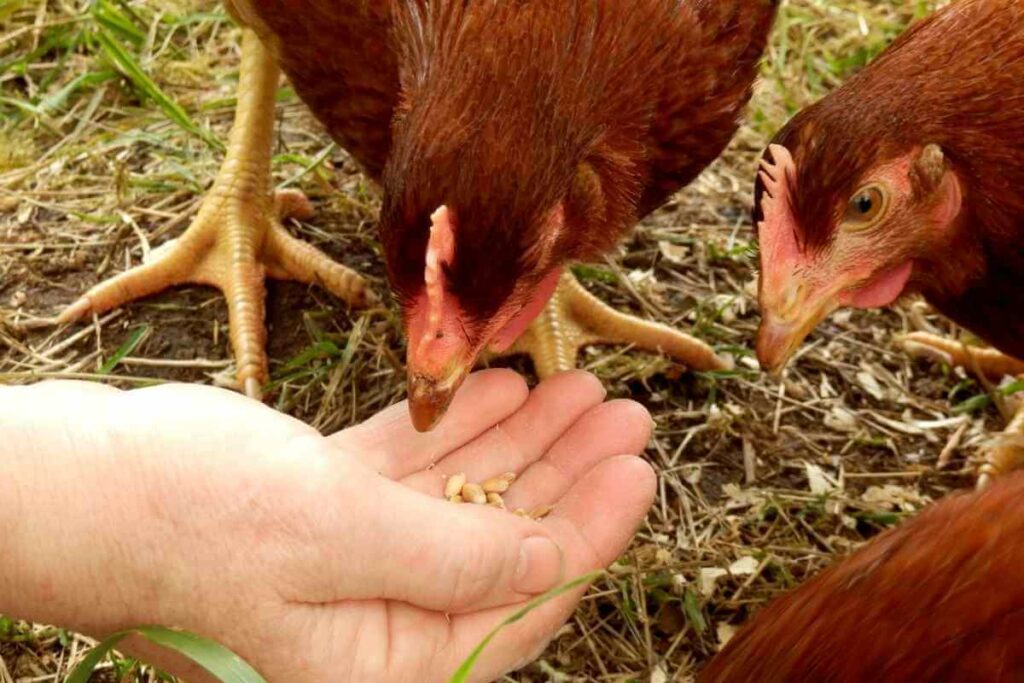
Here are the best type of feeders to protect against rat attacks.
Treadle feeders
These offer the best protection against pests.
They have a unique design that allows them to dispense food when a chicken steps on the foot pedal.
When idle, the feed is stored in a heavy-duty container that can hold up to 40 lbs. of food.
Trough feeders
As the name suggests, these look like troughs.
They are easily portable and made of wood, metal or plastic.
Metal feeders are the most durable.
Tankstand feeders
These are larger than other types and dispense more feed when the container starts to empty.
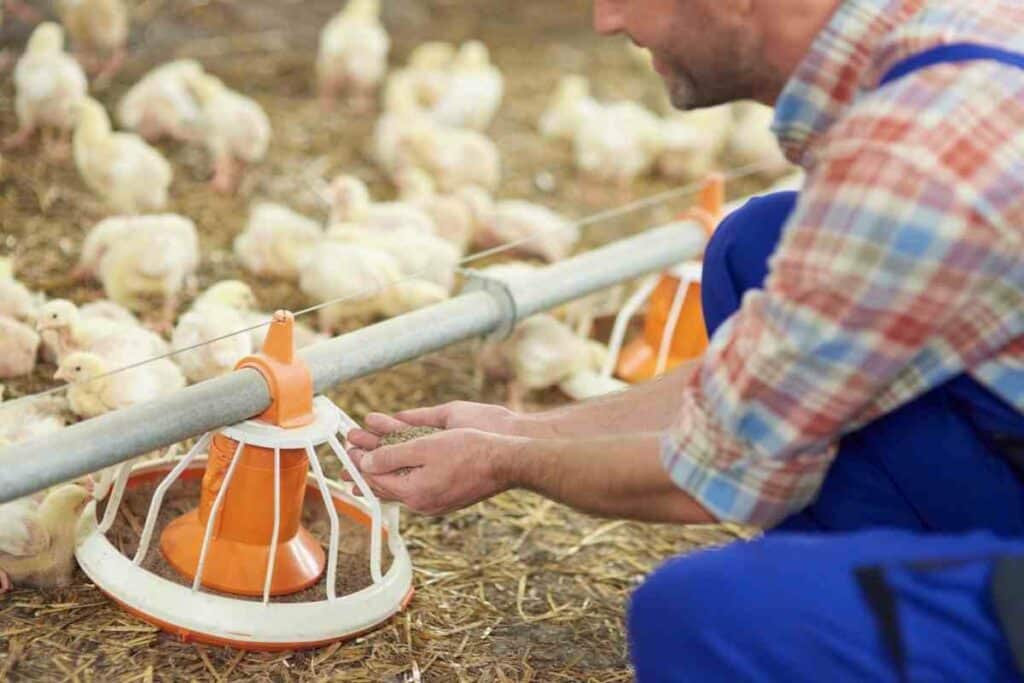
Hanging and tube feeders have the simplest design, but they are messier than others.
You’ll need to clean your chicken coop more often to reduce the risk of rat infestation and conditions caused by improper hygiene.
Wrapping Up
With rats, employing preventive measures is better than dealing with rodents.
Ensure that you observe proper hygiene because rats frequent untidy spaces.
If you notice any signs of infestation, use the tips mentioned above to remove the pests.
Avoid using poison, as it poses a risk to your birds.
